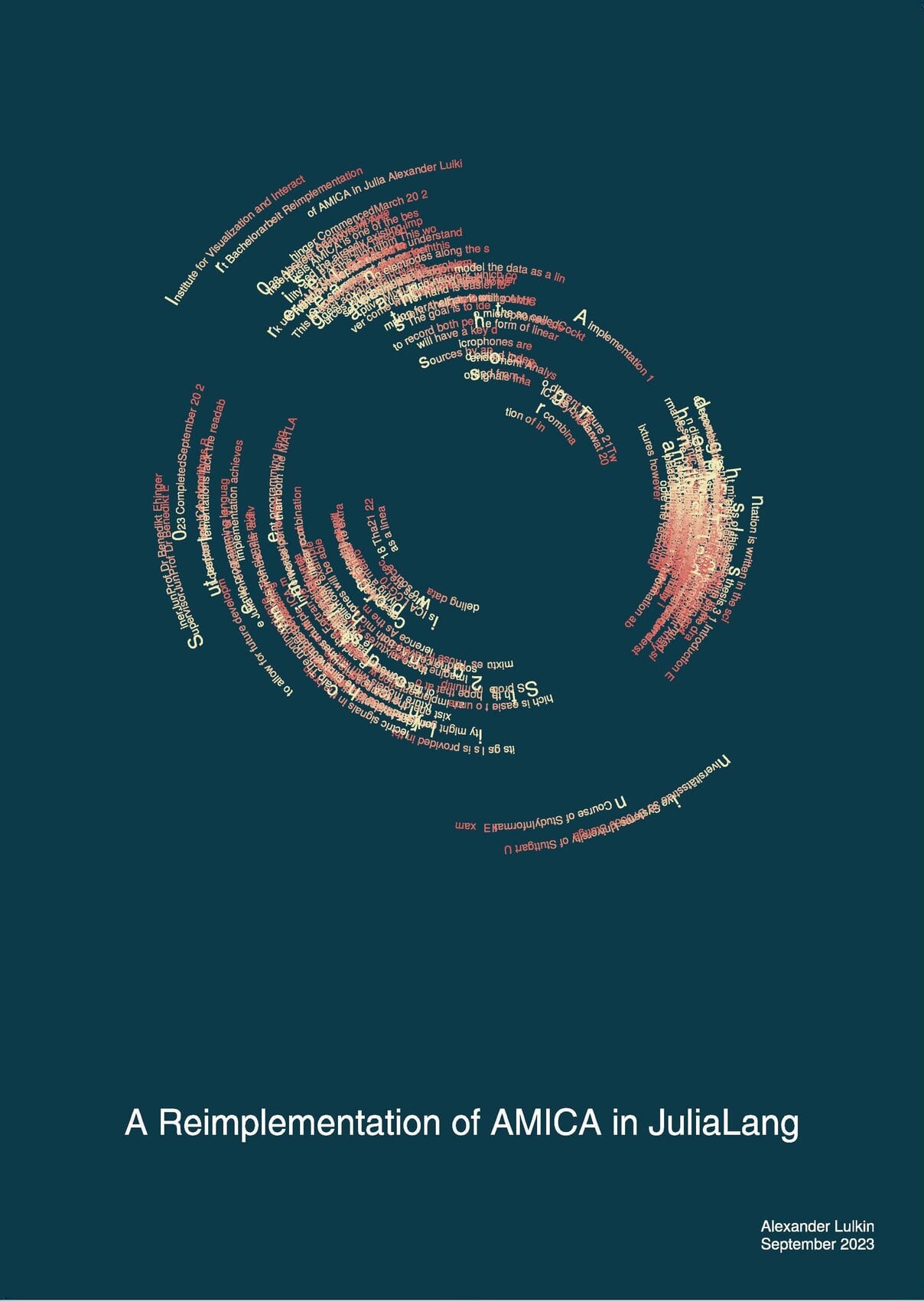A Reimplementation of AMICA in JuliaLang
for Alexander Lulkin
This thesis focuses on reimplementing the popular yet complex AMICA signal analysis algorithm in JuliaLang. The Thesis Art piece provides a visual representation of the algorithm’s core concept, a high-dimensional rotation step broken down to two dimensions.
The Creation Process
The project originated with the aim of demystifying the AMICA algorithm by implementing it in JuliaLang in a more accessible and extensible version. While generating rotations — a fundamental aspect of Independent Component Analysis (ICA)— proved straightforward, visualizing the algorithm’s “motion streaks” required several iterations. Using ThesisArt.jl, an experimental visual concept was developed that leverages text size and color to highlight the streaks, resulting in a dynamic and visually pleasing effect.
Artistic Concept
The Thesis Art piece explores the core idea of AMICA: the rotation of data points, which is equivalent to mixing sources in signal processing. This visualization abstracts the concept of ICA-rotation, emphasizing its mathematical elegance and complexity. Unlike traditional plots of real data, the piece captures a conceptual framework, inviting viewers to interpret its motion and color gradients as part of the data transformation process.
“What has rotation to do with data analysis? This visualization challenges viewers to think about the fundamental ways computers represent and transform data.”
Benedikt Ehinger
Personal Reflection
Reflecting on the challenges of the visual concept, Benedikt states: “Rotations are simple in theory and in 2D, but capturing their essence visually was a different story. After multiple iterations, I believe the final result balances abstraction and clarity, offering viewers a unique perspective on how algorithms manipulate data.”
